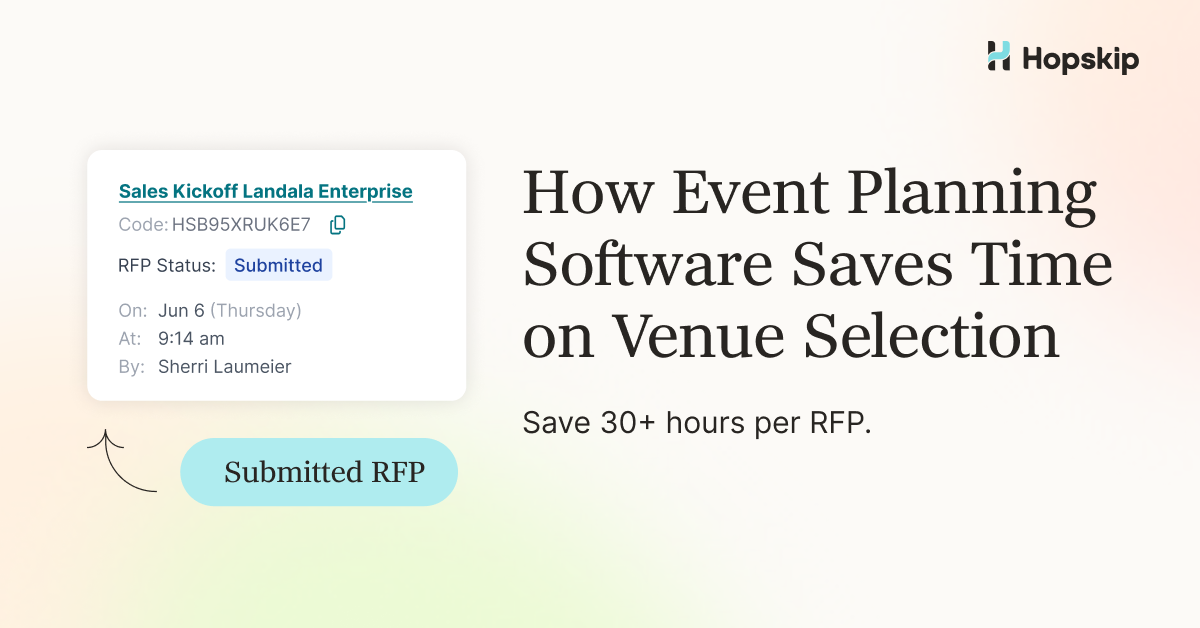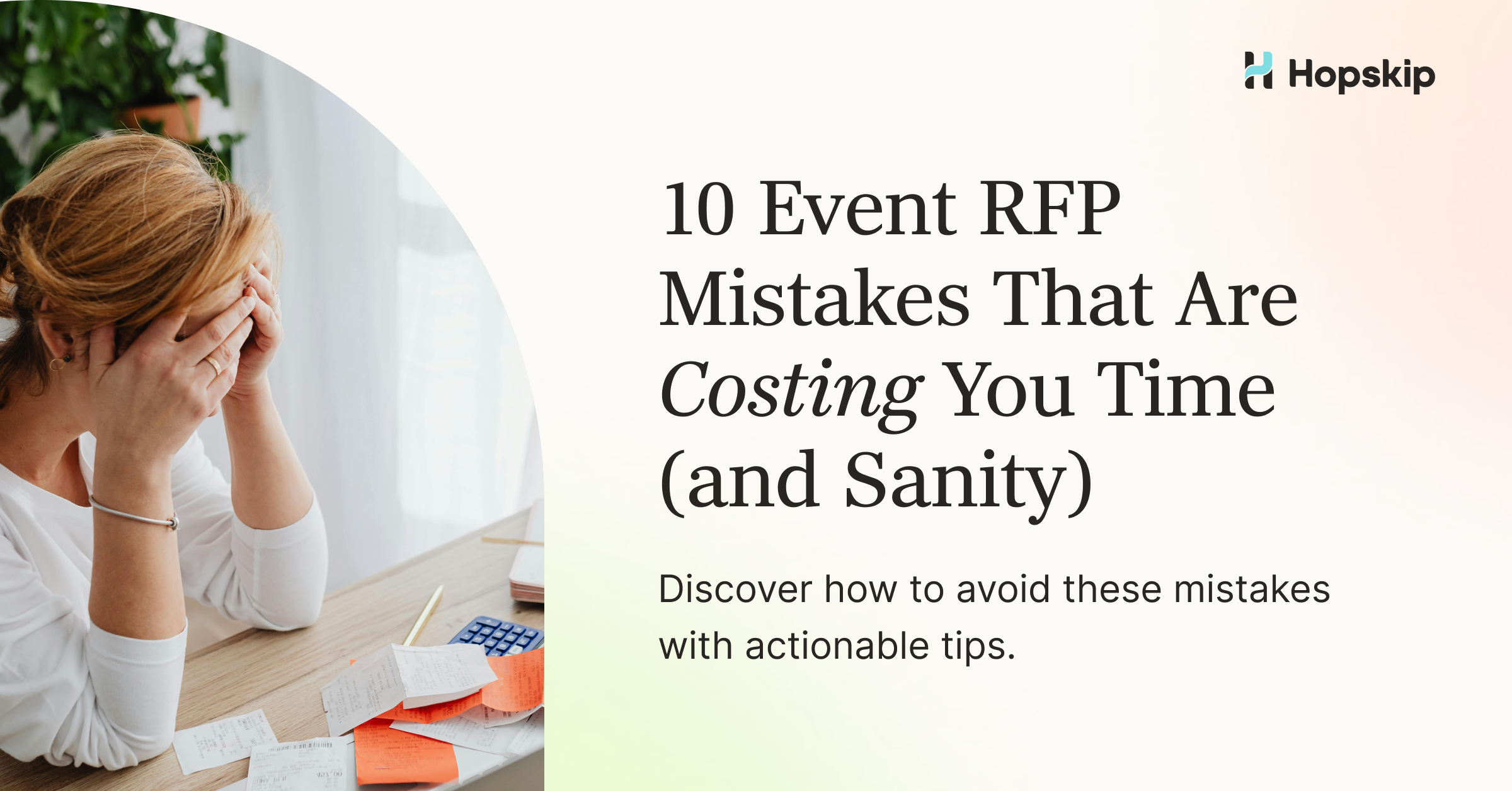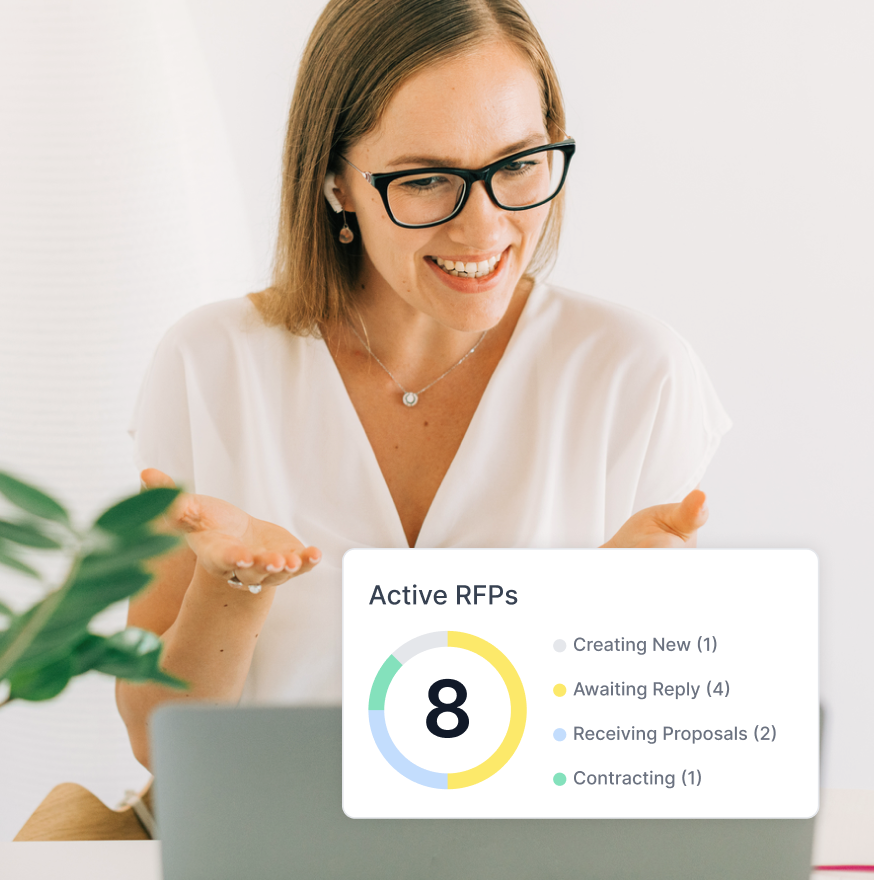Industry News & Insights
Creative Meeting Icebreakers for Corporate Events & Team Building
Kate Robertson
Nov 6, 2025
Meeting Icebreakers: Creative Ideas for Conferences
Let’s be honest: watching 200 corporate event attendees stare at their phones while waiting for a session to start isn’t exactly the networking nirvana you pitched to leadership. You need those strangers to actually talk to each other, and you need it to happen before the coffee gets cold.
For event planners orchestrating corporate conferences, team-building retreats, or hybrid gatherings, the right icebreaker can transform awkward silence into genuine connection. And no, asking everyone to “introduce themselves and share a fun fact” doesn’t count—we’ve all suffered through that one too many times.
In this post, we’ll explore why icebreakers matter (hint: it’s backed by data), share five proven themes with creative ideas you can steal for your next event, and show you how to measure whether they’re actually working.
Why Icebreakers Matter in Corporate Events (The Data Doesn’t Lie)
Here’s the thing about icebreakers: when done right, they’re not fluffy time-fillers. They’re strategic tools that directly impact your event ROI.
Consider this: Events with structured networking activities see 35% higher attendee satisfaction scores compared to those with unstructured “mingle time.” And according to research from EventMB, 72% of attendees say meaningful connections are their top reason for attending conferences in person—which means if you’re not facilitating those connections, you’re basically hosting an expensive webinar with catering.
A well-chosen icebreaker:
- Lowers social barriers faster than three glasses of wine (and keeps HR happier)
- Increases session participation by up to 40% when people feel comfortable speaking up
- Supports team-building goals through activities that build trust and reveal working styles
For planners juggling venue logistics, sponsor activations, and attendee experience all at once, the icebreaker is one of the most underrated levers you have. It sets the tone for everything that follows—and it costs almost nothing compared to your AV budget.
1. Start with the Right Objective (No Really, Think About It)
Before you Google “fun corporate icebreakers” and pick the first result, pause. What are you actually trying to accomplish with this activity in the context of this specific event?
Your goal might be to:
- Introduce strangers and facilitate genuine connection
- Energize people after lunch when the post-sandwich slump hits
- Encourage cross-functional networking among attendees from different departments or companies
- Set the stage for collaboration before diving into working sessions
- Simply get people laughing because the morning keynote was… intense
For example, if you’re running a 300-person global summit with attendees who’ve never met, you need an activity that gets bodies moving and conversations flowing quickly. But if you’re hosting a 40-person leadership retreat focused on strategic planning, something deeper—involving reflection or story-sharing—will serve you better.
VenueNow research shows that “goal-oriented icebreakers” aligned with clear event objectives see 2.5x higher engagement than generic activities tacked on as afterthoughts.
Pro tip: Match your icebreaker intensity to your audience. Finance executives at 8 AM might not be ready for interpretive dance, but product teams at a creative offsite probably are.
2. Icebreaker Ideas for Networking & Large Groups
When you’re working with 100-500 people at a corporate conference, you need activities that scale without requiring a PhD in logistics to execute.
Human Bingo (But Make It Actually Interesting) – Forget “has a pet” and “drinks coffee.” Create Bingo cards tailored to your attendee demographics. Try: “Has presented at three conferences,” “Switched careers in the last five years,” “Can explain blockchain without saying ‘it’s like digital money.'” Participants mingle to find matches and mark squares. First to complete a row wins a prize (make it good—Starbucks gift cards are fine, but an upgrade to VIP seating is better). This typically generates 3-4 new connections per participant in under 15 minutes.
Speed Networking (Actually Timed, Not “Everyone Awkwardly Mill About”) – Set up structured 2-3 minute conversations with timers and rotation signals (bell, music change, whatever works). This ensures people meet new contacts and prevents the dreaded “trapped in boring conversation” scenario. The time pressure keeps energy high and gives people a natural exit. Studies show speed networking creates 40% more follow-up connections than unstructured networking time.
“Find Your Similarities & Differences” – Split attendees into groups of 4-5. Challenge them to find three things everyone shares (no, “we all have to breathe” doesn’t count) and one unique fact about each person. Then reconvene and share the most surprising discoveries. This creates genuine connection and often surfaces “I had no idea we both…” moments that lead to real relationships.
3. Icebreakers for Team Building & Collaboration
If your event focuses on team-building or collaboration—think company retreats, department offsites, or workshop-intensive conferences—your icebreakers should reveal communication styles, values, and build psychological safety.
Rose, Thorn & Bud (The Executive-Friendly Vulnerability Exercise) – Ask each participant to share: a “Rose” (something positive recently), a “Thorn” (a current challenge), and a “Bud” (an opportunity they’re excited about). This framework creates structured vulnerability without feeling like forced therapy. It’s particularly effective for leadership teams, with 78% of participants reporting they felt more comfortable contributing honestly in subsequent sessions.
Marshmallow Challenge (Chaos You Can Control) – Give teams 18 minutes to build the tallest freestanding structure using only spaghetti sticks, tape, string, and one marshmallow (which must sit on top). It’s hands-on, hilarious when structures collapse, and reveals natural team roles, iteration styles, and how people handle constraints. Bonus: it consistently humbles overconfident executives, which everyone enjoys watching. Average completion rate is just 25%, making success extra satisfying.
“Superpower Selection” (AKA “Humble Brag with Purpose”) – Each person identifies their “work superpower” (examples: “translating tech-speak for non-technical stakeholders,” “staying calm when everything’s on fire,” “remembering everyone’s coffee order”). After sharing, they pair with someone whose superpower complements theirs. This builds awareness of team strengths and creates natural partnerships for breakout sessions. Research shows teams who articulate individual strengths see 33% better collaboration in subsequent activities.
4. Hybrid & Virtual-Friendly Icebreakers
Since roughly 60% of corporate events now include hybrid or virtual components (thank you, 2020, for that lasting gift), you need icebreakers that work through screens without making people wish for technical difficulties.
One-Word Check-In with Live Word Cloud – At session start, ask: “In one word, how are you feeling about today?” Use polling tools like Slido, Mentimeter, or Zoom polls to collect responses and generate a live word cloud. Pick one or two interesting words to explore (“I see three people said ‘caffeinated’—same”). This takes 90 seconds and immediately surfaces group energy while making remote participants visible.
Virtual Show & Tell (Childhood Game, Adult Version) – Ask participants to grab an object within arm’s reach and share why it matters in 60 seconds. This pivot from standard introductions sparks actual stories and gives genuine insight into people’s lives. Plus, you learn who has interesting desk decorations and who has… a stapler. 85% of participants report feeling more connected to the group after this activity than standard video introductions.
“What Are You Bringing to This Meeting?” (The Mindfulness Moment)** – Ask attendees to type one sentence in chat: “I’m bringing [emotion/goal/energy] to this session.” The facilitator highlights a few responses and asks brief follow-ups. This creates presence, focuses scattered attention, and sets collaborative tone. Takes under five minutes and works beautifully for both in-person and virtual audiences.
5. Best Practices to Make Icebreakers Actually Work
Here’s where good icebreakers go to die: in poor execution. Follow these guidelines to avoid becoming the cautionary tale in someone’s event-planning war stories.
Keep it short & sharp – Most icebreakers should take 10-15 minutes maximum. Any longer and you risk losing momentum (and fighting the “when do we get to the real content?” crowd). Data shows engagement drops 28% after the 15-minute mark for opening activities.
Match activity to tone & audience – A high-energy game works for a product launch event but might crash and burn at a compliance training. Read your audience. Financial services executives might prefer structured conversation prompts over improv exercises. Marketing teams? They’ll probably want the improv.
Prepare facilitation & materials – Even simple activities need prep. Have clear instructions, a visible timekeeper, and all necessary supplies ready. If you’re asking people to write on sticky notes, make sure you have enough sticky notes. Obvious? Yes. Commonly forgotten? Also yes.
Inclusivity isn’t optional – Choose icebreakers that work for introverts, extroverts, remote participants, and people with accessibility needs. Not everyone wants to play charades in front of 200 people. Offer chat options for virtual attendees and quieter alternatives for in-person participants. 42% of attendees identify as introverted—design accordingly.
Tie back to event goals – After the activity, explicitly connect it to what’s next: “You just shared your work superpower—now we’re diving into breakout sessions where you’ll use those exact strengths to solve real challenges.” This prevents the icebreaker from feeling like disconnected fluff.
Gather feedback & iterate – Post-event surveys should ask: “Did the opening activity help you feel more engaged?” Track responses and refine for next time. The best event planners steal what works and ruthlessly cut what doesn’t.
6. Measuring Impact on Your Event (Because “It Felt Good” Isn’t a KPI)
As an event planner, you’re expected to demonstrate ROI—and yes, that includes the touchy-feely stuff like icebreakers.
Track these metrics to prove value:
Participation rate: How many attendees engaged in the icebreaker vs. total session attendance? Aim for 80%+ participation.
Connection outcomes: In post-event surveys, ask “How many new connections did you make?” Events with structured icebreakers report 2.3x more new connections per attendee.
Session engagement: Compare participation levels (questions asked, chat activity, breakout involvement) in sessions with icebreakers vs. those without. You’ll typically see 25-40% higher engagement when people are warmed up.
Qualitative feedback: Look for comments like “I felt comfortable speaking up after that opening activity” or “I connected with someone who’s now a valuable contact.”
Net Promoter Score: Events that nail the opening moments see 12-point higher NPS on average.
Linking icebreaker outcomes to your overall event KPIs (networking value, attendee satisfaction, knowledge retention) helps you defend that budget line item when finance starts asking questions.
7. Why Hopskip Makes This Easier
At Hopskip, we get it: you’re managing tight timelines, shifting formats (in-person, hybrid, virtual), and sky-high expectations to deliver experiences that drive business results. That’s why our platform supports the full spectrum of your conference needs—from venue sourcing to logistics to designing event flow that actually facilitates connection.
With Hopskip, you’re not just booking a venue; you’re designing the environment for meaningful interaction from the moment attendees walk through the door (or log in online). Because when you nail those first few minutes, everything else flows better.
Plus, our platform helps you source venues with layouts that support interactive activities by automatically including the estimated sqft needed, based on the meeting format.
Conclusion
Icebreakers in corporate events aren’t just awkward time-fillers between the “real content”—they’re strategic tools for connection, energy, and meaningful participation. When executed well, they directly impact networking outcomes, team building, and overall event success.
The best icebreakers warm up the room, surface personalities, break down barriers, and tie into the larger event purpose. They make attendees feel seen, energized, and ready to engage—which is exactly what you want before diving into your carefully planned agenda.
At Hopskip, we’re here to help you build events that connect people to place, purpose, and each other. So go ahead—choose the activity, set the tone, and watch your next session begin not with awkward silence, but with genuine momentum.
Ready to explore venues and event-flow tools that support the full experience? Let’s connect and make your next event one people actually remember (for the right reasons). Book a demo with a member of our team today.




